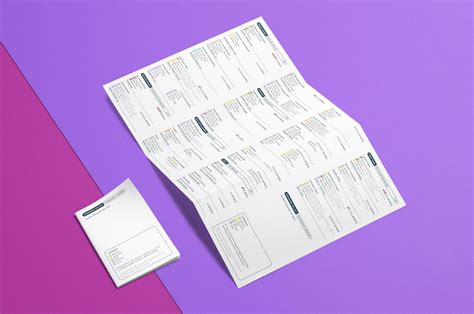Print Your PDF with Comments: A Simple Guide

In today's digital world, working with PDFs has become an integral part of various industries and personal tasks. While PDFs are known for their versatility and ability to preserve document formatting, adding comments and annotations to them can greatly enhance collaboration, feedback, and overall efficiency. In this comprehensive guide, we will delve into the world of PDF commenting, exploring the benefits, techniques, and best practices to ensure a seamless and productive experience.
The Importance of Commenting on PDFs

Commenting on PDFs goes beyond mere convenience; it is a powerful tool that revolutionizes the way we collaborate and communicate. Whether you are a student, professional, or creative individual, adding comments to PDFs can significantly improve the review and editing process. Here are some key advantages:
- Enhanced Collaboration: Commenting allows multiple individuals to contribute their insights, suggestions, and feedback directly on a document. This collaborative approach streamlines the review process, ensuring everyone is on the same page.
- Efficient Feedback: With PDF comments, you can provide precise and actionable feedback, highlighting specific areas for improvement or making suggestions with context. This level of detail makes it easier for recipients to understand and act upon the feedback.
- Version Control: By tracking changes and comments, you can maintain a clear audit trail of the document's evolution. This is especially valuable for complex projects or when working with multiple stakeholders, as it ensures everyone is working with the most up-to-date version.
- Time-Saving: PDF commenting eliminates the need for back-and-forth emails or separate document versions. Instead, all comments and annotations are consolidated within the PDF, making it quicker and easier to review and implement changes.
- Accessibility: PDFs with comments are easily shared and accessed, making them ideal for remote collaboration or when working with distributed teams. This accessibility fosters better communication and ensures everyone has the information they need, regardless of their location.
Choosing the Right PDF Commenting Software

To fully leverage the power of PDF commenting, selecting the appropriate software is crucial. While many basic PDF readers offer commenting features, more advanced tools provide a richer set of functionalities. Here are some factors to consider when choosing a PDF commenting solution:
- Feature Set: Look for software that offers a comprehensive range of commenting tools, including text annotations, highlighters, strike-throughs, shapes, and even audio/video comments. These features enable you to express your feedback in a variety of ways, catering to different learning styles and preferences.
- Ease of Use: The software should have an intuitive interface that makes it easy to navigate and use. A user-friendly design ensures that you and your team can focus on the task at hand rather than spending time learning complex software.
- Collaboration Features: Opt for a solution that supports real-time collaboration, allowing multiple users to work on a document simultaneously. This ensures seamless teamwork and reduces the need for constant version control and sharing.
- Security: Data security is paramount, especially when dealing with sensitive documents. Choose a PDF commenting tool that offers robust security measures, such as password protection, encryption, and access controls, to safeguard your files.
- Integration: Consider whether the software integrates well with your existing workflow and tools. Integration with cloud storage services, document management systems, or even email clients can streamline your processes and improve productivity.
Mastering the Art of PDF Commenting
Now that we’ve explored the benefits and chosen the right software, let’s dive into the practical aspects of commenting on PDFs. Here are some tips and best practices to ensure your commenting experience is efficient and effective:
1. Define Comment Styles
Before you start commenting, establish a set of comment styles or templates that your team can use consistently. This ensures a uniform look and feel across all documents, making it easier for reviewers to understand the feedback. Common comment styles include:
- Text Comments: These are the most basic form of comments, allowing you to add textual explanations, suggestions, or questions directly on the document.
- Highlighting and Underlining: Use different colors to highlight important passages or draw attention to specific sections. This visual emphasis can be especially useful for emphasizing key points.
- Strike-Throughs: When suggesting deletions or revisions, strike-throughs are a clear and concise way to indicate the changes needed.
- Shapes and Symbols: Utilize shapes like arrows, circles, or squares to point out specific areas or call out important elements. Symbols can also be used to represent common feedback, such as a checkmark for approval or a question mark for clarification.
- Audio/Video Comments: For more detailed or complex feedback, consider using audio or video comments. These can be particularly useful when explaining a concept or providing contextual information.
2. Organize Your Comments
To maintain clarity and ease of review, it’s essential to organize your comments effectively. Here are some strategies to achieve this:
- Comment Boxes: Use comment boxes or bubbles to enclose your text comments. This visually separates the feedback from the document content, making it easier to identify and read.
- Comment Threads: If you are working on a collaborative project, make use of comment threads. These allow you to group related comments together, creating a discussion around a specific topic or issue. This helps reviewers understand the context and flow of the feedback.
- Comment Summaries: Generate comment summaries or reports that provide an overview of all the comments made on a document. This summary can be shared with stakeholders or team members, giving them a quick glimpse of the feedback received.
3. Provide Constructive Feedback
When adding comments, focus on providing constructive and actionable feedback. Here are some guidelines to ensure your comments are effective:
- Be Specific: Provide clear and precise feedback by highlighting the exact area or text you are referring to. This helps the recipient understand the context and makes it easier to implement the suggested changes.
- Offer Solutions: Instead of merely pointing out issues, suggest potential solutions or alternatives. This proactive approach not only saves time but also demonstrates your engagement and willingness to contribute positively.
- Use Positive Language: While it's important to be honest, maintain a positive tone in your comments. Avoid using harsh or derogatory language, as this can discourage collaboration and hinder the review process.
- Prioritize Comments: If you have multiple comments, prioritize them based on their importance or urgency. This helps the recipient understand which feedback to address first, especially when dealing with time-sensitive projects.
4. Utilize Comment Features Effectively
PDF commenting software often comes with a range of advanced features. Here’s how you can leverage them to enhance your commenting experience:
- Comment Templates: Create comment templates for frequently used feedback or instructions. This saves time and ensures consistency in your commenting style.
- Comment Attachments: Attach relevant files, images, or references to your comments. This provides additional context and supports your feedback, making it more comprehensive.
- Comment Tracking: Make use of comment tracking features to monitor the progress of your feedback. This allows you to see which comments have been addressed and which ones still require attention.
- Comment Reviews: Regularly review and update your comments, especially when working on iterative projects. This ensures that your feedback remains relevant and aligned with the project's evolving requirements.
PDF Commenting for Different Industries
PDF commenting is not limited to a specific industry; it finds applications across various fields. Here’s how different industries can leverage PDF commenting to improve their workflows:
1. Education
In the education sector, PDF commenting can revolutionize the way teachers provide feedback to students. By adding comments directly on assignments or research papers, teachers can offer detailed and personalized guidance. This immediate feedback loop enhances student learning and encourages continuous improvement.
2. Creative Industries
For designers, writers, and other creative professionals, PDF commenting is an invaluable tool. It allows clients and collaborators to provide precise feedback on drafts or prototypes. With comments, creative teams can iterate and refine their work, ensuring it meets the desired vision and standards.
3. Legal and Compliance
PDF commenting plays a crucial role in the legal and compliance sectors. Lawyers and compliance officers can use comments to highlight important clauses, suggest revisions, or flag potential issues in contracts, policies, or regulations. This meticulous review process ensures accuracy and compliance.
4. Healthcare
In healthcare, PDF commenting can facilitate the review and approval of medical reports, patient records, or research papers. Doctors, researchers, and administrators can collaborate on these documents, ensuring accurate and timely feedback. This collaborative approach improves patient care and research outcomes.
5. Architecture and Engineering
Architects and engineers often work with complex blueprints and designs. PDF commenting allows them to provide precise feedback on these documents, suggesting modifications or highlighting potential issues. This collaborative review process ensures the accuracy and safety of the final designs.
The Future of PDF Commenting

As technology continues to advance, the future of PDF commenting looks promising. Here are some potential developments and trends to watch out for:
- Artificial Intelligence Integration: AI-powered PDF commenting tools may emerge, offering intelligent suggestions and feedback based on the document's content. This could revolutionize the way feedback is provided, making it even more efficient and accurate.
- Enhanced Collaboration Features: PDF commenting software may integrate advanced collaboration tools, such as real-time video conferencing or screen sharing. This would enable remote teams to collaborate more effectively, providing feedback and discussing changes in real-time.
- Cloud-Based Commenting: Cloud-based commenting platforms could become more prevalent, allowing users to access and comment on PDFs from anywhere. This seamless integration with cloud storage services would further enhance remote collaboration and accessibility.
- Mobile Commenting: With the increasing use of mobile devices, PDF commenting apps may gain popularity. These apps would enable users to provide feedback on the go, ensuring collaboration and productivity are not limited by location.
Conclusion
PDF commenting is a powerful tool that has the potential to transform the way we collaborate and provide feedback. By mastering the art of PDF commenting, you can enhance your productivity, improve communication, and streamline your workflows. Whether you are a student, professional, or creative individual, embracing this technology will undoubtedly elevate your document review process.
FAQ
Can I comment on PDFs without specialized software?
+While specialized PDF commenting software offers advanced features, basic PDF readers often provide commenting capabilities. However, the range of features may be limited, and the user experience might not be as intuitive.
How do I ensure my PDF comments are secure?
+To enhance the security of your PDF comments, consider using PDF commenting software that offers password protection, encryption, and access controls. These features ensure that only authorized individuals can view and modify the comments.
Can I collaborate with others in real-time using PDF commenting software?
+Yes, many advanced PDF commenting tools support real-time collaboration, allowing multiple users to work on a document simultaneously. This feature ensures seamless teamwork and efficient document review.
Are there any tips for providing effective feedback through PDF comments?
+When providing feedback via PDF comments, ensure your comments are specific, constructive, and actionable. Use clear language, offer solutions or alternatives, and maintain a positive tone. Prioritize comments based on their importance to guide the recipient effectively.



